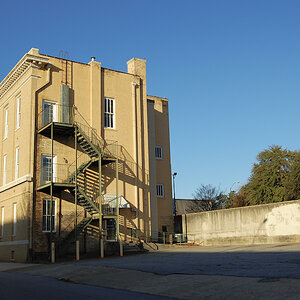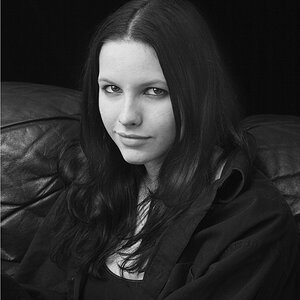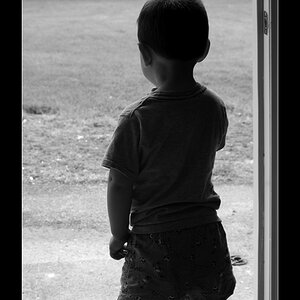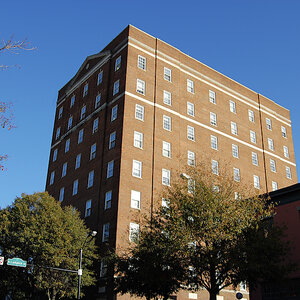Navigation
Install the app
How to install the app on iOS
Follow along with the video below to see how to install our site as a web app on your home screen.

Note: This feature currently requires accessing the site using the built-in Safari browser.
More options
You are using an out of date browser. It may not display this or other websites correctly.
You should upgrade or use an alternative browser.
You should upgrade or use an alternative browser.
New camera technology advice needed
- Thread starter InfiniteRes
- Start date
gsgary
Been spending a lot of time on here!
- Joined
- Oct 31, 2008
- Messages
- 16,143
- Reaction score
- 3,002
- Location
- Chesterfield UK
- Website
- www.gsgary.smugmug.com
- Can others edit my Photos
- Photos OK to edit
Have you tried The Dragons Den you can pitch on-line
BBC - Dragons' Den
BBC - Dragons' Den
bazooka
No longer a newbie, moving up!
- Joined
- Dec 28, 2009
- Messages
- 2,293
- Reaction score
- 294
- Location
- Houston
- Website
- www.dirtjournal.com
- Can others edit my Photos
- Photos OK to edit
I only want to say that this statement is troublesome. You sound like America and Capitalism owe you something... neither don't. Just like immigration to our shores doesn't guarantee an easy successful life, a good idea, intelligence, even hard work, doesn't guarantee you a successful startup. If this is the attitude you choose to embrace, you are destined to fail. The freedom to pursue such ventures is what we all should be thankful... just like the freedom ~not~ to invest in your idea.
:thumbup::thumbup::thumbup:
usayit
No longer a newbie, moving up!
- Joined
- Nov 15, 2003
- Messages
- 9,521
- Reaction score
- 347
- Can others edit my Photos
- Photos OK to edit
But not even responding? That is plain rude.
This is my point....
Its a free country.. they don't owe you a response.
A successful photographic business (wedding photographer) is not about being a good photographer but a good business man and entrepreneur. A successful technology start up (like you are pursuing) is not about being a good inventor or engineer, its about business... no different. You have to get "it" with no expectation of getting anything back in return. If you want to get something back for each and every bit of effort, then stick to being someone else's employee.
Its not rude... you just simply haven't met the minimum requirements to even begin to convince them that their time is worth spending it on you. They don't owe you their time like I don't owe a call back for each telemarketer that leaves a voice message.
Again.. this attitude that people owe you will get you no where. My advice... partner up with someone who's attitude is correctly aligned and better equipped... stay in the back tinkering.
InfiniteRes
TPF Noob!
- Joined
- Dec 25, 2008
- Messages
- 12
- Reaction score
- 0
- Can others edit my Photos
- Photos NOT OK to edit
"holy ****, my head just exploded"
Hahaha! :lmao: That is how I felt developing this thing. And would you guess it, I hate math?
Hmmm...I have a feeling that if I were to participate in that, they would have my head on a platter by the end of the day. But, I suppose I could try?
"Again.. this attitude that people owe you will get you no where. My advice... partner up with someone who's attitude is correctly aligned and better equipped... stay in the back tinkering."
As I have noticed...which is why I continue to persists and ignore what I find to be rude.
Once you understand the explanation...you will likely have many many many more questions as to how I plan on carrying this out. Unfortunately though, those are trade secrets :meh: However, ask whatever you want and we will see whether I can tell you or not.
I will likely begin posting on other forums soon...and possibly make a youtube video.
Hahaha! :lmao: That is how I felt developing this thing. And would you guess it, I hate math?
Hmmm...I have a feeling that if I were to participate in that, they would have my head on a platter by the end of the day. But, I suppose I could try?
"Again.. this attitude that people owe you will get you no where. My advice... partner up with someone who's attitude is correctly aligned and better equipped... stay in the back tinkering."
As I have noticed...which is why I continue to persists and ignore what I find to be rude.
Once you understand the explanation...you will likely have many many many more questions as to how I plan on carrying this out. Unfortunately though, those are trade secrets :meh: However, ask whatever you want and we will see whether I can tell you or not.
I will likely begin posting on other forums soon...and possibly make a youtube video.
Last edited:
Formatted
No longer a newbie, moving up!
- Joined
- Dec 20, 2009
- Messages
- 1,391
- Reaction score
- 66
- Location
- England
- Website
- www.jawns.co.uk
- Can others edit my Photos
- Photos NOT OK to edit
I'm by no means a degree student but I'm in my second year of Physic A level....
and I by no means understand. I must read again...
lol
and I by no means understand. I must read again...
lol
- Joined
- Apr 9, 2009
- Messages
- 41,401
- Reaction score
- 5,706
- Location
- Iowa
- Website
- kharrodphotography.blogspot.com
- Can others edit my Photos
- Photos OK to edit
Infinite mechanical processes that result in infinite resolution take infinite time to complete.
astrostu
I shoot for the stars
- Joined
- Aug 1, 2006
- Messages
- 673
- Reaction score
- 17
- Location
- Boulder, CO, USA
- Can others edit my Photos
- Photos NOT OK to edit
Okay, I read through your description, and it seems to me as though you are talking about technologies that already exist. First, your basic idea seems to be that of a 1-D scanner - a photomultiplier tube (detector/diode/whatever), but instead of scanning just across, you scan across (±x), down (±y), and then along the diagonals (+x/-y, -x/+y).
So, on the face of it, it seems like this can be accomplished (1) by dithering, or (2) by octagonal pixels (which I'm sure some lab is already experimenting with). Dithering - which they do sometimes do with HST - is where you take your image, and then you move the camera over exactly the distance of 1/2 a pixel, and then take your image again. After lots of math, you can then pull out more information than you had originally. I think octagonal - or just smaller - pixels would be easier, though, and more practical.
Another technology that is in use that seems similar is the push-broom detector. This is in use on many spacecraft, such as the HiRISE camera on the Mars Reconnaissance Orbiter (I highly recommend taking a look at some of their photos ... 25 cm/px on Mars). This has a linear array of pixels that then "sweeps over" the landscape. So you have a fixed width and then arbitrary length, which is why many photos from modern-day craft are very rectangular. While it's not arbitrary resolution along the width, it offers arbitrary resolution along the length, limited by spacecraft stability, brightness of the landscape and detector gain, read-out time, etc.
And, by using a linear array of pixels, the system is going to be many faster than a single pixel recorder - which is what you're talking about, from my reading. And, for consumer electronics, the time gained by having an array instead of a line of pixels is even faster. When you're talking about 1/1000-sec exposures, or even 1/30-sec, I don't see your system being fast enough and precise enough, especially when modern CCD and CMOS array detectors have so much many advances and improvements that can be made without trying to develop a completely new technology that - at least based on what I read - seems to (a) already kinda exist, and (b) be a step back to how things were done 40 years ago with single-pixel detectors that scanned the sky.
So, on the face of it, it seems like this can be accomplished (1) by dithering, or (2) by octagonal pixels (which I'm sure some lab is already experimenting with). Dithering - which they do sometimes do with HST - is where you take your image, and then you move the camera over exactly the distance of 1/2 a pixel, and then take your image again. After lots of math, you can then pull out more information than you had originally. I think octagonal - or just smaller - pixels would be easier, though, and more practical.
Another technology that is in use that seems similar is the push-broom detector. This is in use on many spacecraft, such as the HiRISE camera on the Mars Reconnaissance Orbiter (I highly recommend taking a look at some of their photos ... 25 cm/px on Mars). This has a linear array of pixels that then "sweeps over" the landscape. So you have a fixed width and then arbitrary length, which is why many photos from modern-day craft are very rectangular. While it's not arbitrary resolution along the width, it offers arbitrary resolution along the length, limited by spacecraft stability, brightness of the landscape and detector gain, read-out time, etc.
And, by using a linear array of pixels, the system is going to be many faster than a single pixel recorder - which is what you're talking about, from my reading. And, for consumer electronics, the time gained by having an array instead of a line of pixels is even faster. When you're talking about 1/1000-sec exposures, or even 1/30-sec, I don't see your system being fast enough and precise enough, especially when modern CCD and CMOS array detectors have so much many advances and improvements that can be made without trying to develop a completely new technology that - at least based on what I read - seems to (a) already kinda exist, and (b) be a step back to how things were done 40 years ago with single-pixel detectors that scanned the sky.
Josh66
Been spending a lot of time on here!
- Joined
- Oct 31, 2007
- Messages
- 14,593
- Reaction score
- 1,239
- Location
- Cedar Hill, Texas
- Can others edit my Photos
- Photos NOT OK to edit
OK, I didn't read all of that  . I'll try to get through it later.
. I'll try to get through it later.
Assuming that it works - have you tried selling the idea to Governments, or their various agencies? Sounds like it certainly has military applications, and it sounds like governments may be the only ones with the funding to pursue it.
Or maybe defense contractors? Any major contractor is constantly developing/researching new imaging/signals technologies, and they could be interested. They will undoubtedly want to own the patent though.
 . I'll try to get through it later.
. I'll try to get through it later.Assuming that it works - have you tried selling the idea to Governments, or their various agencies? Sounds like it certainly has military applications, and it sounds like governments may be the only ones with the funding to pursue it.
Or maybe defense contractors? Any major contractor is constantly developing/researching new imaging/signals technologies, and they could be interested. They will undoubtedly want to own the patent though.
InfiniteRes
TPF Noob!
- Joined
- Dec 25, 2008
- Messages
- 12
- Reaction score
- 0
- Can others edit my Photos
- Photos NOT OK to edit
"Infinite mechanical processes that result in infinite resolution take infinite time to complete."
Which is why the rate of resolution acquisition is important, extremely important, considering there are other technologies out there that can also reach very high resolutions given large periods of time. 1 trillion pixels in 1/1000 of a second is by far the fastest I have seen though; along with that, it does not seem as if any of the other technologies can even reach 1 terapixel given an infinite amount of time. And anyways...I can vastly increase that speed once I begin selling this camera by using the profits to develop another special idea of mine that complements the camera.
I know about dithering and read about it very early on in the designing stage. It has a limit in terms of how many times it can subdivide the pixels...and is susceptible to many other limitations.
Yep, I thought of using octagonal pixels, though it does not seems as if that is an absolute requirement. I am open minded at this point. I need to start development to see what works best; since the pixels are virtual, the coder can change the format at any time.
Push-broom? I usually refer to that as a scanning back camera. I am aware of that tech too. I assure you though, my camera works very differently and is far less limited.
It is very fast. I have a very high ceiling in terms of how fast I can physically take the shot, and A/D converters run fast enough right now for 1 terapixel and above at 1/1000 of a second. Another issue is the rise time of photodiodes. At 1 terapixel, I am well beneath the limit. I can likely go up to a petapixel before having to switch detector type to obtain higher speeds.
I have tried....but they always tell me to go through the "standard channels" for funding, which all have a set of requirements absolutely prohibiting a start up business from using their services. I read the fine print :x I know that if I could speak to the right guy I could directly receive funding, but I have not been able to find him yet. I WAS considering listing my patent with the USPTO as sensitive military information, but that would have greatly constricted my options, and no one would ever know of my accomplishment.
Tried a few defense contractors and they gave me the same response. I really think I just need to meet with the right guy instead of talking to their customer service representative.
I MAY at some point be willing to sell the patent if I must. I would rather do that than loose my apartment.
Which is why the rate of resolution acquisition is important, extremely important, considering there are other technologies out there that can also reach very high resolutions given large periods of time. 1 trillion pixels in 1/1000 of a second is by far the fastest I have seen though; along with that, it does not seem as if any of the other technologies can even reach 1 terapixel given an infinite amount of time. And anyways...I can vastly increase that speed once I begin selling this camera by using the profits to develop another special idea of mine that complements the camera.
I know about dithering and read about it very early on in the designing stage. It has a limit in terms of how many times it can subdivide the pixels...and is susceptible to many other limitations.
Yep, I thought of using octagonal pixels, though it does not seems as if that is an absolute requirement. I am open minded at this point. I need to start development to see what works best; since the pixels are virtual, the coder can change the format at any time.
Push-broom? I usually refer to that as a scanning back camera. I am aware of that tech too. I assure you though, my camera works very differently and is far less limited.
It is very fast. I have a very high ceiling in terms of how fast I can physically take the shot, and A/D converters run fast enough right now for 1 terapixel and above at 1/1000 of a second. Another issue is the rise time of photodiodes. At 1 terapixel, I am well beneath the limit. I can likely go up to a petapixel before having to switch detector type to obtain higher speeds.
I have tried....but they always tell me to go through the "standard channels" for funding, which all have a set of requirements absolutely prohibiting a start up business from using their services. I read the fine print :x I know that if I could speak to the right guy I could directly receive funding, but I have not been able to find him yet. I WAS considering listing my patent with the USPTO as sensitive military information, but that would have greatly constricted my options, and no one would ever know of my accomplishment.
Tried a few defense contractors and they gave me the same response. I really think I just need to meet with the right guy instead of talking to their customer service representative.
I MAY at some point be willing to sell the patent if I must. I would rather do that than loose my apartment.
mdtusz
TPF Noob!
- Joined
- Feb 10, 2010
- Messages
- 259
- Reaction score
- 0
- Location
- Victoria BC
- Can others edit my Photos
- Photos OK to edit
It seems like a concept that could work in certain situations. but Canon and Nikon aren't going to be opening their eyes any time. If you can right now with your prototype be making images of 1 tp at 1/1000 exposure times, there's something there. Do you have any processed images in a jpeg form or are they all raw data in graph form? How long does it take to actually process the data (with the aforementioned 1/1000 shutter speed)?
If the mechanical aspect of a shutter isn't stopping the development and you have actually made an image that is viewable in ridiculous detail, it's probably worth it to call up Dragons Den or even contact an entrepreneur in the electonics industry as formally as you can.
If the mechanical aspect of a shutter isn't stopping the development and you have actually made an image that is viewable in ridiculous detail, it's probably worth it to call up Dragons Den or even contact an entrepreneur in the electonics industry as formally as you can.
InfiniteRes
TPF Noob!
- Joined
- Dec 25, 2008
- Messages
- 12
- Reaction score
- 0
- Can others edit my Photos
- Photos NOT OK to edit
Unfortunately no...if I could, I do not think I would have a problem. I only have a rough prototype right now which runs at a native horrific 25 pixels. I recently multiplexed a bunch of 5 X 5 together to get a 525 pixel image though.
The problem is...even if i were an electronic engineer and could use an A/D converter other than my DMM, I am also not an excellent coder. My current program is VERY slow, since it is a raw force method. In fact, it can take over a trillion code iterations to find the answer in some circumstances.
The code that I would write if I had the abilities, would only take around a thousand iterations, a billion times faster than my current method. Along with that, an advanced coder and electronic engineer could apply various other methods I developed to further drastically decrease processing time.
Say I had an electronic engineer and coder at my disposal....I still need a workspace to cut, weld, and forge metal with. I just cannot do that in an apartment. Without those two guys (and ideally an optical engineer) and no workspace, I can only get 25 pixels. The prototype in the pictures I posted I made with glue, rubber bands, and a DREMEL. THAT was hard.
Data processing is a major part of how my camera works. I estimate that it will take anywhere between a few minutes and a few hours to process a terapixel given my current ideas. For a petapixel, I will need to implement more advanced techniques. Also, the more powerful the computer is, the faster the processing will go. So if you use a Tesla array, we are talking about fairly low processing times.
The problem is...even if i were an electronic engineer and could use an A/D converter other than my DMM, I am also not an excellent coder. My current program is VERY slow, since it is a raw force method. In fact, it can take over a trillion code iterations to find the answer in some circumstances.
The code that I would write if I had the abilities, would only take around a thousand iterations, a billion times faster than my current method. Along with that, an advanced coder and electronic engineer could apply various other methods I developed to further drastically decrease processing time.
Say I had an electronic engineer and coder at my disposal....I still need a workspace to cut, weld, and forge metal with. I just cannot do that in an apartment. Without those two guys (and ideally an optical engineer) and no workspace, I can only get 25 pixels. The prototype in the pictures I posted I made with glue, rubber bands, and a DREMEL. THAT was hard.
Data processing is a major part of how my camera works. I estimate that it will take anywhere between a few minutes and a few hours to process a terapixel given my current ideas. For a petapixel, I will need to implement more advanced techniques. Also, the more powerful the computer is, the faster the processing will go. So if you use a Tesla array, we are talking about fairly low processing times.
mdtusz
TPF Noob!
- Joined
- Feb 10, 2010
- Messages
- 259
- Reaction score
- 0
- Location
- Victoria BC
- Can others edit my Photos
- Photos OK to edit
Well 525 pixels won't get you too far haha. If you need more advanced programming skills, go down to the nearest university and visit the engineering dept. Find someone who's fresh out or still working to finish school and offer them some money to help you with this. I was in engineering for a year and learned how to program in C at a fairly proficient level with binary searches and bubble searches covered within the first semester. I think someone in 3rd or 4th year specializing in computer engineering would probably be able to speed up your processing time. As far as optics go. Work with what's available. I don't know enough about the whole photodiode thing or A/D converters (what's that), but I'm sure you can find help around the subject. If you're making a 25 pixel image right now with that rickety prototype, do what you can to make that 525 native and keep bumping it up. Forget about time right now, that can be sorted out after you can PROVE that the method is capable of taking super high res pictures. If you walk into dragons den with a picture of anything blown up to 1000x scale and still clear, they will probably be impressed if not just a bit.
InfiniteRes
TPF Noob!
- Joined
- Dec 25, 2008
- Messages
- 12
- Reaction score
- 0
- Can others edit my Photos
- Photos NOT OK to edit
So you think that would be a good idea too...visiting the local college. I will see what I can do with that. With those 2 pro's, even without the physical model, we could at least take a CCD generated picture, convert it to my line format, and treat it like it came straight from my line generation system. With that we could work on processing megapixel images so when I have the resources to build a better prototype, the digital end will already be mostly covered.
If I could only find a job...and save up a thousand dollars, perhaps I could take a contained still shot. If the object is not moving or changing in any way, and I have an hour to take the picture, it becomes considerably easier and cheaper to build a prototype.
Did you know where I live, you need a permit to own an air tank over a gallon? I live in one of the most anti-business cities in America unfortunately.
If I could only find a job...and save up a thousand dollars, perhaps I could take a contained still shot. If the object is not moving or changing in any way, and I have an hour to take the picture, it becomes considerably easier and cheaper to build a prototype.
Did you know where I live, you need a permit to own an air tank over a gallon? I live in one of the most anti-business cities in America unfortunately.
Last edited:
Hello,
After about 2 years of use my Finepix F50se went nuts and gave me a "Focus Error" message after which the lens would not retract and made strange clicking noises. I sent it back to Fuji and they gave me a quote of $115 to get it repaired.
I'm just wondering if its worth paying that much for a repair (Think I originally paid $250 ish). Or should I put the cash towards a new one. I seen the J38 is only $100 bucks new. Anyone know if the J38 is worth getting?
Any advice on what to do/ recommendations of cheapish new replacement camera to get if I chose not to get it repaired.
Thanks in advance
After about 2 years of use my Finepix F50se went nuts and gave me a "Focus Error" message after which the lens would not retract and made strange clicking noises. I sent it back to Fuji and they gave me a quote of $115 to get it repaired.
I'm just wondering if its worth paying that much for a repair (Think I originally paid $250 ish). Or should I put the cash towards a new one. I seen the J38 is only $100 bucks new. Anyone know if the J38 is worth getting?
Any advice on what to do/ recommendations of cheapish new replacement camera to get if I chose not to get it repaired.
Thanks in advance
Similar threads
- Replies
- 3
- Views
- 135
- Replies
- 29
- Views
- 4K
- Replies
- 15
- Views
- 863
- Replies
- 20
- Views
- 2K

![[No title]](/data/xfmg/thumbnail/34/34115-73b827c6a6db1413dcead11e4caaae69.jpg?1619736285)



![[No title]](/data/xfmg/thumbnail/37/37603-739c5d9b541a083a12f2f30e45ca2b7b.jpg?1619738147)






